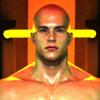Genesis (3) morphs made in hexagon distorting in studio
 Reality1
Posts: 115
Reality1
Posts: 115
Howdy folks,
I followed a nice tutorial on making Genesis morphs in Hexagon. WInterbros- Morphing Genesis with DAZ Studio and Hexagon
(I'd link, but looks like it's not in the store anymore. Maybe not a good sign.)
Then spent a few hours gettnig all the vertices just where I wanted them. Then I brought the morph back into Studio and whaaaa! The nearly perfect lines I made for a skull-surgery morph were al out of alignment.
Oddly enough, the morph looks fine in Studio until I let go of the slider, then something happens to it- perhaps weights or poly creasing calculated? Are the angles I used to disappear the top of the skull too sharp? Something new with Genesis 3?
The morph looks nothing like it did in Hexagon.
Wahhh! What a baby...
Can anyone tell me what I'm missing?
-John


Comments
It could be the effect of SubD, given that SubD is off when adjusting - you can check that by going to the Parameters pane and in the Mesh Resolution group setting the resolution to Base (which also turns SubD off). Other things to check, though I don't then know why it would look OK during manipulation, are that the figure was zeroed before being sent to Hexagon (or that you turned on reverse deformations on bringing it back, but that won't entirely fix issues from HD morphs).
Thanks Richard.
That was it. Makes perfect sense that there would be a difference after subdivision.
After reading some other posts about this, I feel like I should check to see if one still has to be a PA to work with HD mesh-morphs.
Seems like it would be like catch 22 for some artists- might not be able to make the product without the tool can't get the tool without making the prod. ;-)
Thanks again,
-John
Yes, the HD morphs are still PA-only - presumably people have to show their skills using other options (normals, displacement, or just standard resolution morphs) before becoming PAs.
That's sad if it's the reasoning. The amount of arbitrary geometry created by high-res displacement maps is prohibitive for many uses. And the inconsistencies in the Disp-Bump-Normal mapping formats makes them dependent on the shader-renderer which limits the market for a product. The guys who created content for Carrara come to mind. Wahh! lol
If the bump/normal/displacement maps are created from the high-res mesh baked down (and if the potential PA has the means to create high-definition morphs they should have the emans to do that) then creating one of the other map types, or an HD mroph, should be fairly straightforward
By baked down mesh, I'm guessing something like a monochrome UV map for reference. But if you look at the way Iray renders "bumps" on the human figures and compare it to it's predecessors, you'll get what I'm saying. When used in Iray, the legacy bump maps leave splotchy lines on the human figures that are a step backwards in realism. I'm guessing there are ways to convert them "properly" but most PA's don't seem to haven't figured it out yet. I don't think this is their fault. An updated Iray could support the legacy map heuristics. But my point is that the PA's don't have control over how their product life will be effected by changing technology. And these mapping heuristics are vunerable to technological progress as they are essentially hacks to compenstate for resource limitations. A 2D map cannot respond to moves and morphs the way a mesh would and are presently immune to weight map calculations. Whaaa! Gripe gripe. Moan moan. :-)
BTW I figured out what you're talking about by baking a mesh variation into a 2D map. And yeah, I guess there are tools to do this too...